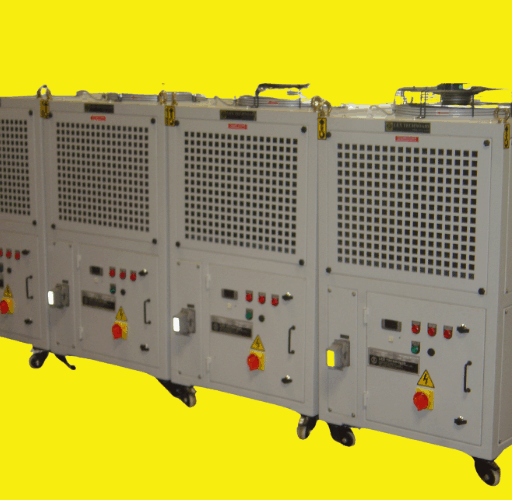Enhancing Accuracy and Efficiency with a Centralized Coolant Chiller for Grinding Machines
Client Overview
A manufacturer of precision machine tool spindles was facing a critical issue in maintaining dimensional accuracy during the grinding process. To ensure consistent results, components were manually cooled in an air-conditioned room for 12–15 hours before measurement — a process that delayed production and consumed valuable time.
With nearly 40% of their spindles exported, maintaining component quality was vital.
Challenges
- Temperature inconsistency between the grinding process (ambient temperatures of 40°C) and the measurement room (20°C) led to inaccurate readings.
- The need to stabilize each component after grinding resulted in half-day delays per batch.
- The customer lacked shop floor space to install additional equipment inside.
- The existing approach impacted both efficiency and accuracy.
Trial Solution: Standalone Chiller Machine
Lex Technoaid provided one of its Coolant Chillers for Grinding Machines for trial use on a single grinding machine. The goal was to maintain coolant temperature stability at the time of grinding, removing the need for extended post-processing in an air-conditioned room.
With the coolant Chillers for grinding machines, the component temperature remained constant during the operation itself.
Results from the Trial:
- Component accuracy improved by 30%, even without using the air-conditioned room.
- No post-process cooling was needed, saving up to 15 hours per batch.
- Process efficiency increased by 50% — the client saved half a day on every order.
Full Implementation: Centralized Coolant Chiller System
Based on the successful trial, the customer decided to install a centralized coolant Chiller system for 10 grinding machines. Due to floor space limitations, the new Chiller Machine was placed outside the plant, reducing the load on the planned shop floor air conditioning.
The industrial water Chiller System now runs in an open-loop setup, where the water-based coolant cycles between machines, tanks and the Chiller. Feedback mechanisms were added to alert operators in case of system issues or temperature spikes.
Outcome
- Eliminated post-process cooling and improved throughput by 50%
- Delivered better dimensional accuracy in critical spindle grinding
- Preserved shop floor space and reduced air conditioning load
- Enabled scalable cooling for 10 machines using one Centralized Coolant Chiller
- Demonstrated durability and maintainability, even in high-heat, high-load environments
Conclusion
This success story highlights the impact of deploying a purpose-built grinding machine Chiller. With a customized centralized coolant Chiller, the client achieved faster turnaround, greater accuracy and seamless scalability — a clear example of how a tailored industrial water Chiller system can redefine efficiency in high-precision manufacturing.

